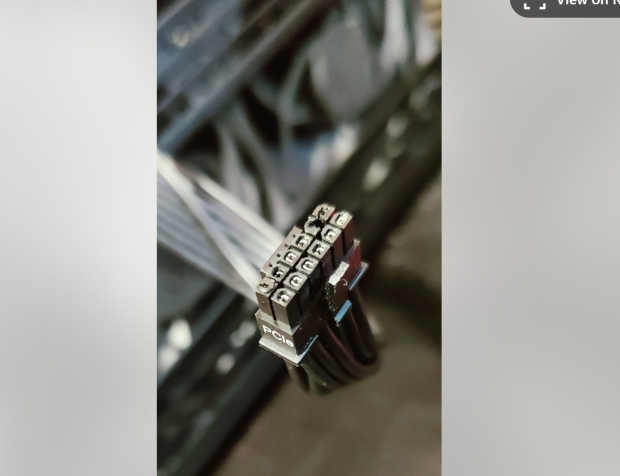Despite using Nvidia’s official power connector, the failure still occurred, wrecking the gear and costing them a cool $2,900. “The damage was localised to one pin on the connector,” they wrote, which aligns depressingly well with what has now become a hallmark of Nvidia’s flawed 12V-2×6 setup.
He said: “I did not mess with any of the OC settings; I ran it as is out of the box. I bought it about a month ago from a Best Buy drop. I saw the melting cable posts and thought that I was safe if I stayed away from custom cables. It's still not safe to use the original manufacturer's cables.”
I initially thought the damage was limited to the GPU side, but after disassembling the build, I found even more damage on the PSU side (pictures included). Yes, that bulge on the connector is melted plastic, and what appears to be a cable is burnt white.
The trouble stems from a dodgy pin design. If even one of the six pins doesn’t fully connect, the remaining ones try to pick up the slack — triggering surges and, as Tom’s Hardware grimly points out, possible fires. It's the same fault that haunted the 40 series, and now it's resurfacing across RTX 5090 cards with disturbing consistency.
Others on Reddit have posted similar horror stories since February, initially blaming third-party cables. But Roachard's cooked connector was the factory model — making it clear that the issue was baked in by design.
Meanwhile, with Nvidia still struggling to get RTX 50 series units on shelves, replacements are as rare as a GPU from Chipzilla worth buying. Roachard’s hopes of getting a fix out of Nvidia look about as slim as a connector pin not catching fire.
Tom’s Hardware suggests Asus’ ROG Astral GPUs as a safer bet, touting per-pin current readings to dodge these power meltdowns. For those confident enough to mod, incorporating per-pin sensing into existing RTX 50 GPUs might offer a lifeline — or at least some peace of mind while gaming next to a fire extinguisher.




